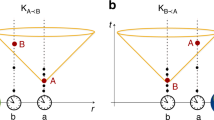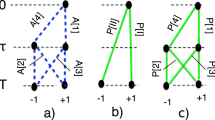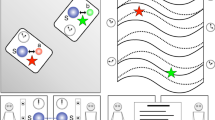Abstract
I CANNOT resist Mr. Cunningham's invitation in his review of my Romanes Lecture (NATURE, Oct. 28, p. 568) to justify more precisely the transition from the picture of world-history as a tangle of world-lines to the scheme of intervals filling a continuum of space-time and demanding non-Euclidean geometry. “Prof. Eddington seems to contemplate as ‘measurable’ the intervals between pairs of points in this continuum which do not correspond to events in the history of any particle or electron in the material universe. But we wish to ask him how these intervals are in practice to be measured.” Mr. Cunningham's point is that the picture which we have to dissect is the actual history of the world, and we are not allowed to alter it—to introduce measurements which never were made, or to introduce physically recognisable events at points where nothing actually happened. I accept this limitation. He admits, however, that all measurements that have ever been made are contained in the picture, and, I might add, all measurements that ever will be made. Thus we have a large number of measured intervals available for discussion; and I think that Mr. Cunningham, like myself, is convinced that the geometry which these measured intervals obey is not exactly Euclidean but is given correctly by Einstein. When once this geometry is determined we proceed to fill all space-time with calculated points and intervals ; just as we ordinarily fill all space with calculated points and distances after first determining the geometry by means of a few distances actually measured and a few points actually perceptible. Only a small number of the calculated points and intervals correspond to events and measurements in the historical picture; but whenever there is a measured value it will agree with the calculated value.
This is a preview of subscription content, access via your institution
Access options
Subscribe to this journal
Receive 51 print issues and online access
$199.00 per year
only $3.90 per issue
Buy this article
- Purchase on Springer Link
- Instant access to full article PDF
Prices may be subject to local taxes which are calculated during checkout
Similar content being viewed by others
Author information
Authors and Affiliations
Rights and permissions
About this article
Cite this article
EDDINGTON, A. The Measurement of Intervals. Nature 110, 697–698 (1922). https://doi.org/10.1038/110697a0
Issue Date:
DOI: https://doi.org/10.1038/110697a0
Comments
By submitting a comment you agree to abide by our Terms and Community Guidelines. If you find something abusive or that does not comply with our terms or guidelines please flag it as inappropriate.



